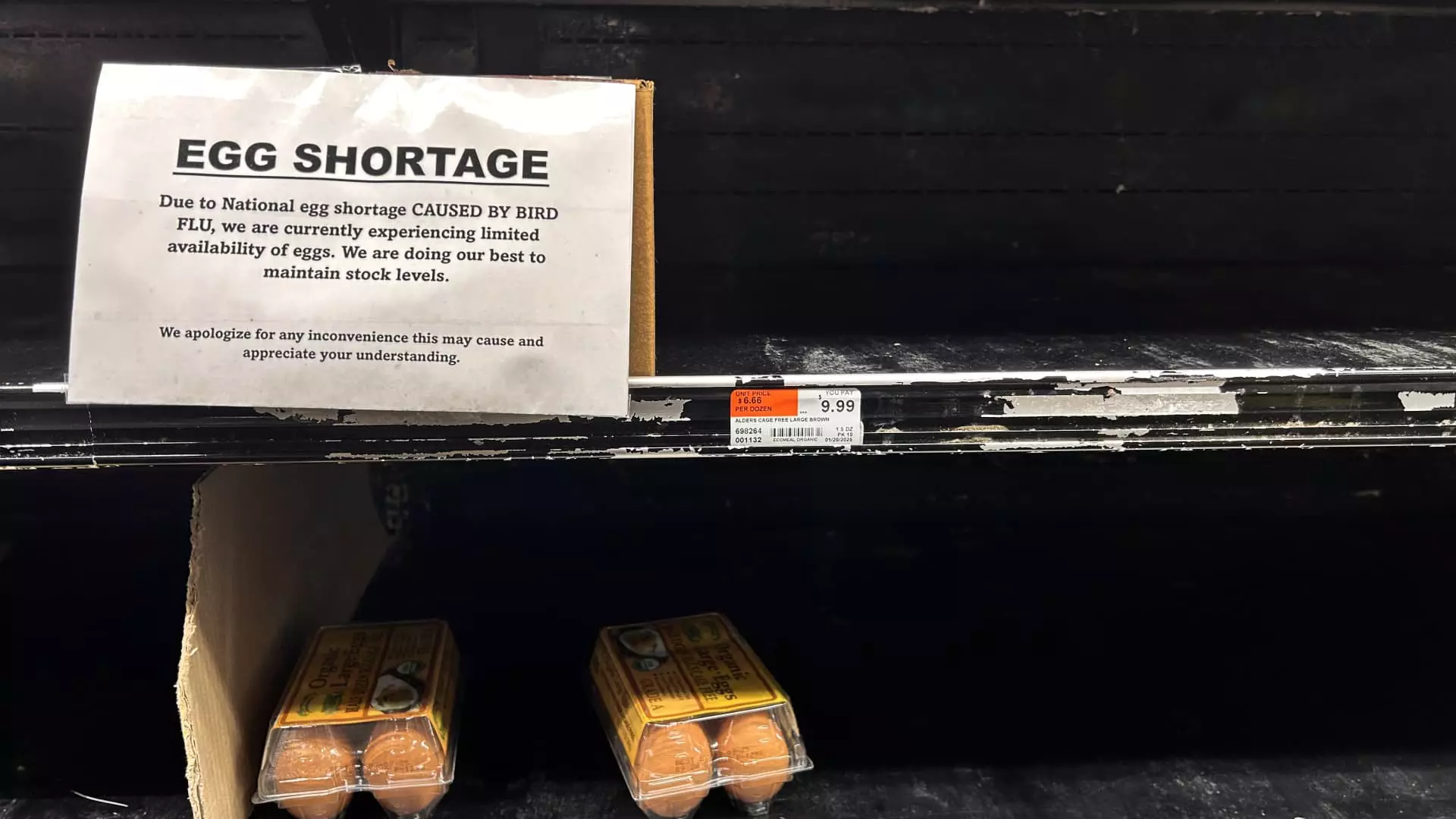The recent spike in wholesale egg prices has emerged as a significant economic concern for consumers across the United States. As of recent reports, prices have skyrocketed to an average of $8 per dozen for large, white-shelled eggs—an alarming leap from the previous record of $5.46 per dozen set in December 2022. This dramatic escalation is fundamentally rooted in an ongoing outbreak of highly pathogenic avian influenza, commonly referred to as bird flu, which has wreaked havoc on commercial egg-laying farms, decimating flocks and consequently limiting supply.
According to market analysts, there is typically a delay before the wholesale prices make their way to the retail sector, meaning consumers may yet feel the full brunt of these increases. This lag in adjusting prices at grocery stores adds a layer of uncertainty for shoppers, particularly as they face inflationary pressures that extend beyond just the cost of eggs.
Consumer experiences vary widely based on where they shop. Larger retailers, like Walmart and Costco, often have the leverage needed to absorb some of the wholesale price increases, potentially mitigating the impact on consumers. Their buying power and ability to negotiate fixed-price contracts allow them some flexibility. However, smaller grocery stores and independent retailers usually face tighter margins and find it necessary to adjust prices more rapidly in response to wholesale fluctuations.
Many retail outlets have already imposed purchasing limits to manage demand and maintain some semblance of inventory. Reports indicate that popular chains such as Trader Joe’s and Costco have restricted the number of egg cartons customers can buy to counterbalance the rising costs. These measures not only reflect the current market dynamics but also indicate a broader trend of price sensitivity among consumers.
Furthermore, restaurants are not immune to these pressures. Many establishments, from diners to larger chains like Waffle House, are passing on the increased costs to consumers by raising menu prices or imposing additional charges for dishes that contain eggs. This adds yet another layer of financial strain for households that often include eggs as a staple in various meals.
The root cause of these price surges extends beyond mere supply and demand mechanics; rather, it is significantly driven by the relentless impact of avian influenza. This highly contagious disease has led to substantial mortality rates among poultry, with millions of egg-laying chickens culled to prevent further spread. The scale is staggering, with estimates revealing over 40 million egg-laying chickens affected across the U.S., translating to roughly 13% of the national total.
The USDA’s data highlights an alarming decline in the inventories of shell eggs, which are reported to be approximately 15% to 16% below the five-year average. This inventory decline comes at a time when egg demand naturally peaks during holiday seasons, further exacerbating the supply-demand imbalance.
Experts have stated that the impact of bird flu is unlikely to wane in the immediate future. The outbreak, which has persisted into 2025, shows no signs of abating, with over 22 million egg-laying chickens reported dead just in the early months of the year. The situation continues to evolve, challenging producers to adapt quickly or face financial ruin.
When considering price trends in the poultry sector, the rise in egg prices is stark compared to other poultry products. Data from the Bureau of Labor Statistics indicates that while average retail prices for a dozen large, grade A eggs soared by about 170% from December 2019 to December 2024, other poultry prices have increased at a substantially lower rate—42% for whole chickens and 32% for boneless chicken breasts. This disparity illustrates the disproportionately severe impact of the bird flu outbreak on egg production relative to other poultry forms.
Different types of chickens are affected in varying degrees by the disease, with broilers experiencing fewer casualties compared to egg-laying hens. This discrepancy further substantiates the argument that the current economic pressures surrounding egg pricing stem directly from the unique challenges associated with rearing chickens classified specifically for egg production.
As egg prices continue to rise, understanding the underlying factors influencing these shifts is crucial for consumers. The interplay of bird flu outbreaks, retail price strategies, and broader economic conditions will define the landscape for egg pricing in the months ahead.
Navigating this complex environment will require vigilance not just from consumers, but from retailers striving to balance affordability with their own operational challenges. The future remains uncertain, but the current trajectory paints a clear picture: the humble egg has become an emblem of rising food costs, reflecting a broader inflationary trend that consumers must confront head-on.

